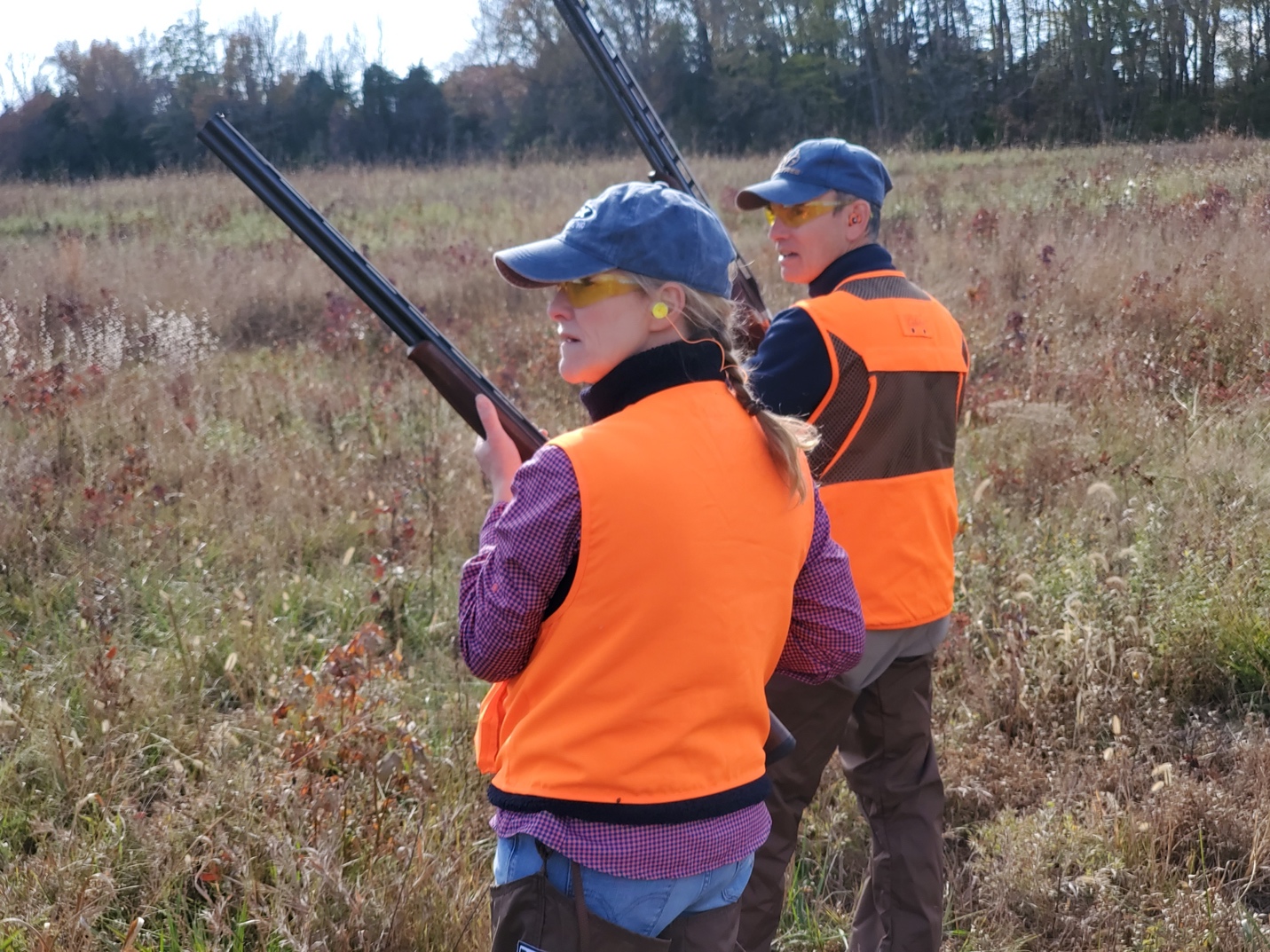Dog is locked up on a gorgeous point. You start kicking just ahead of his nose in the thick cover. A quail pops up, you throw your gun to your shoulder and pull the trigger. And then pull the trigger again. And then watch in disbelief as the bird safely soars into the wood line.
What the heck?!
My students have heard me mention time and time again that if you are shooting a shotgun, there is NO way to avoid the two feet of steel at the end of your nose.
That distraction is huge for most shooters and the reason they miss. They miss not because they are aiming and trying to stare intently at the end of the barrel trying to put it exactly on the bird. No. They miss because they must learn how to keep that muzzle under control and in their line of sight instead of way above their head or down too low or wherever else it shouldn’t be when they see the bird.
In other words, accept it, deal with and make it work for you.
Addressing proper gun fit and correctly mounting the gun are the key. This will allow the shooter to put the muzzle into the bird without “seeking” it and keeps their swing soft and streamlined.
Our lives are wrapped tightly in geometry and physics. It’s unavoidable so we better learn how to work the equation in our favor and create our success with every swing. Keeping the distractions down will let the shooter’s brain and eyes sync and work in tandem instead of those moments where you can literally feel yourself screwing up the shot the entire way.
When you have two feet of steel swinging out in front of you erratically, your body’s natural response it to try and see what it is doing and is it a threat? This is a very primal response and for a really good reason.
We know that you aren’t in “danger”, but the body’s response is ingrained and unavoidable. Why do we miss those shots that we feel we should be able to hit blindfolded? Well, if you were blindfolded you at least wouldn’t be distracted by erratic muzzle movement!
I was just working with a student, prepping him for a ring shoot and the presentations he may see. He was hit or miss at first on the presentations that mimicked a crossing pheasant.
Once we had him start matching his gun speed to target speed and allowing his movements to be one solid and smooth push to the bird, he started crushing every bird. This is because before, he was seeing the bird (step 1), pushing the gun to his shoulder (step 2), getting his head on the comb (step 3), regaining a visual on the bird (step 4), pushing to the bird usually in a quick, jerky movement since he was usually behind it at this point (step 5) and then he would pull the trigger (step 6). Holy cow, I’m exhausted just typing all of that!
Remember, your movements should look like a ballet not a break dance. When you see the bird coming in, softly push forward with your upper body extending your head forward and down to nestle into the stock and maintaining a soft but clear visual on the bird the entire time. Then it’s just a matter of pulling out away from the bird to allow for lead, if it is needed. Once my student stopped trying to “make” the shot happen and just allowed himself to relax and match gun speed to target speed, using proper form and stance, the bird didn’t stand a chance.
It is this exact formula that I offer to teach my wing-shooting students. Particularly those that insist nothing can duplicate shooting feathers. Well, they are somewhat correct but, you must be able to practice. Shooting clays is an excellent way to practice your stance, swing, gun mount, insertion on the bird, different methodologies such as pull away, straight line intercept, Churchill and more. It will create that much needed muscle memory so that when you are in the upland field, grouse woods, duck blind, whatever the scenario, your body will remember what it’s supposed to feel like when you are mounting up to that specific presentation.
For the best practice, be sure to take a friend or family member and get them excited about being outdoors, enjoying the best sport in the world! Wishing everyone a Happy St. Patrick’s Day and no, you don’t need the luck of the Irish to be a good shot. Just slow down and practice, practice, practice!
Kate Ahnstrom, owner of Virginia Shooting Sports is a certified, professional instructor of the Paragon School of Sporting, pro staff Syren/Caesar Guerini, resident pro Orapax Hunting Preserve, Artemis ambassador for Virginia and field staff member of the Sisterhood of the Outdoors. Her tireless dedication to her students’ success is obvious in each and every lesson.



